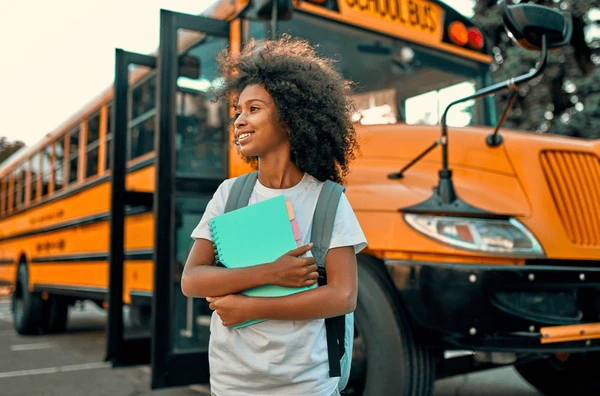In today’s educational landscape, the importance of knowledge sharing and peer-to-peer learning has gained significant recognition. These collaborative practices not only enhance academic performance but also foster a sense of community among students. By promoting environments where students can share knowledge and learn from one another, schools can cultivate critical thinking, creativity, and social skills. This guide will explore the benefits of peer-to-peer learning, effective strategies for implementing knowledge-sharing practices, and the role of technology in facilitating these interactions.
Understanding Peer-to-Peer Learning

Definition of Peer-to-Peer Learning
Peer-to-peer learning refers to an educational approach where students engage with one another to share knowledge, skills, and experiences. This collaborative learning model emphasizes active participation, mutual support, and the exchange of ideas, allowing students to take charge of their learning process. Peer-to-peer learning can occur in various formats, including group discussions, study sessions, tutoring, and collaborative projects.
Importance of Peer-to-Peer Learning
- Enhanced Understanding: Students often grasp concepts better when they explain them to peers. Teaching others reinforces their own understanding and helps clarify misconceptions.
- Increased Engagement: Collaborative learning fosters a more interactive and engaging classroom environment. Students are more likely to participate actively when they work with their peers.
- Development of Social Skills: Peer-to-peer learning encourages communication, teamwork, and conflict resolution skills. These social competencies are essential for success in both academic and professional settings.
- Diverse Perspectives: Learning from peers exposes students to different viewpoints and approaches, enriching their understanding of the subject matter and promoting critical thinking.
- Boosted Confidence: Sharing knowledge and helping others can enhance students’ self-esteem and confidence in their abilities. This positive reinforcement encourages further engagement in the learning process.
Effective Strategies for Promoting Knowledge Sharing
1. Collaborative Learning Environments
Creating collaborative learning environments is essential for fostering peer-to-peer interactions. Here are some strategies to encourage collaboration:
a. Group Work
Assigning group projects or tasks encourages students to work together towards a common goal. This collaboration can take various forms, such as:
- Research Projects: Students can form groups to investigate a topic, divide responsibilities, and present their findings collaboratively.
- Problem-Solving Activities: Presenting students with real-world problems to solve as a team promotes critical thinking and collective brainstorming.
b. Study Groups
Encouraging students to form study groups can enhance their understanding of the material. Study groups can meet regularly to review content, discuss challenging concepts, and quiz one another. This informal setting allows for relaxed interactions and deeper discussions.
2. Peer Tutoring Programs
Establishing peer tutoring programs can facilitate knowledge sharing among students. In these programs, more knowledgeable students assist their peers in understanding difficult subjects. Benefits include:
- Personalized Support: Peer tutors can tailor their explanations to suit the learning styles of their tutees, making the learning experience more effective.
- Building Relationships: Peer tutoring fosters relationships between students, creating a supportive learning community.
3. Knowledge Sharing Platforms
Utilizing technology to create knowledge-sharing platforms can enhance collaboration and communication among students. These platforms can include:
a. Online Forums
Setting up online discussion boards or forums allows students to ask questions, share resources, and engage in discussions outside the classroom. This asynchronous communication can accommodate different schedules and learning paces.
b. Collaborative Tools
Using collaborative tools such as Google Docs or Microsoft Teams enables students to work together in real-time, facilitating group projects and shared note-taking. These tools enhance communication and streamline the collaborative process.
4. Workshops and Peer-Led Sessions
Organizing workshops and peer-led sessions can provide structured opportunities for knowledge sharing. These sessions can focus on specific topics or skills and can be facilitated by students who excel in those areas. Benefits include:
- Skill Development: Students can learn new skills from their peers, enhancing their overall learning experience.
- Empowerment: Allowing students to lead workshops fosters leadership skills and encourages them to take ownership of their learning.
5. Encouraging Reflection and Feedback
Promoting reflection and feedback among peers is vital for enhancing the learning experience. Strategies include:
a. Peer Review
Incorporating peer review processes into assignments allows students to give and receive constructive feedback. This practice encourages critical evaluation and helps students improve their work through collaborative insights.
b. Reflection Journals
Encouraging students to maintain reflection journals can help them articulate their learning experiences and share insights with peers. This practice fosters self-awareness and encourages students to learn from one another’s reflections.
The Role of Technology in Peer-to-Peer Learning
1. Digital Learning Platforms
Digital learning platforms can facilitate peer-to-peer interactions and knowledge sharing. These platforms can include:
- Learning Management Systems (LMS): Platforms like Moodle or Canvas can host discussion forums, group projects, and resource-sharing features, enabling students to collaborate effectively.
- Social Media Groups: Creating private groups on social media platforms can provide informal spaces for students to connect, share resources, and discuss topics outside the classroom.
2. Online Collaborative Tools
Utilizing online collaborative tools enhances the peer-to-peer learning experience. Some effective tools include:
- Padlet: A virtual bulletin board that allows students to post ideas, resources, and questions collaboratively.
- Trello: A project management tool that students can use to organize group tasks and track progress collaboratively.
3. Video Conferencing
Video conferencing tools like Zoom or Microsoft Teams can facilitate real-time discussions and group work, especially in remote or hybrid learning environments. These tools allow students to connect and collaborate, regardless of their physical location.
Overcoming Challenges in Peer-to-Peer Learning
1. Addressing Diverse Learning Styles
Students have varied learning styles and preferences, which can impact their ability to engage in peer-to-peer learning. To address this challenge:
- Encourage Flexibility: Allow students to choose their preferred methods of collaboration, whether through group work, online forums, or one-on-one tutoring.
- Provide Resources: Offer resources and guidance on effective collaboration techniques that cater to different learning styles.
2. Managing Group Dynamics
Group dynamics can sometimes hinder effective collaboration. To promote positive interactions:
- Set Clear Expectations: Establish clear guidelines for group work, including roles, responsibilities, and communication protocols.
- Foster Inclusivity: Encourage all group members to participate and contribute, creating an inclusive environment where diverse perspectives are valued.
3. Ensuring Accountability
Ensuring accountability within peer-to-peer learning can be challenging. To promote responsibility:
- Establish Goals: Set specific, measurable goals for group projects or study sessions to keep students focused and accountable.
- Regular Check-Ins: Schedule regular check-ins to monitor progress and address any challenges that arise during collaboration.
Conclusion
Promoting peer-to-peer learning and knowledge sharing in school communities is essential for fostering a collaborative and supportive educational environment. By implementing effective strategies such as collaborative learning, peer tutoring, knowledge-sharing platforms, and workshops, schools can enhance student engagement, understanding, and social skills.
Technology plays a pivotal role in facilitating these interactions, providing students with the tools they need to connect and collaborate effectively. While challenges may arise, addressing diverse learning styles, managing group dynamics, and ensuring accountability can help create a positive peer-to-peer learning experience.
Ultimately, by prioritizing knowledge sharing and collaboration, schools can empower students to take charge of their learning journeys, develop critical thinking skills, and build lasting relationships within their academic communities. As students learn from one another, they not only enhance their knowledge but also cultivate essential skills that will benefit them throughout their lives.
Read Also About Academic success is the result of consistent effort, effective study techniques, and a positive mindset.


